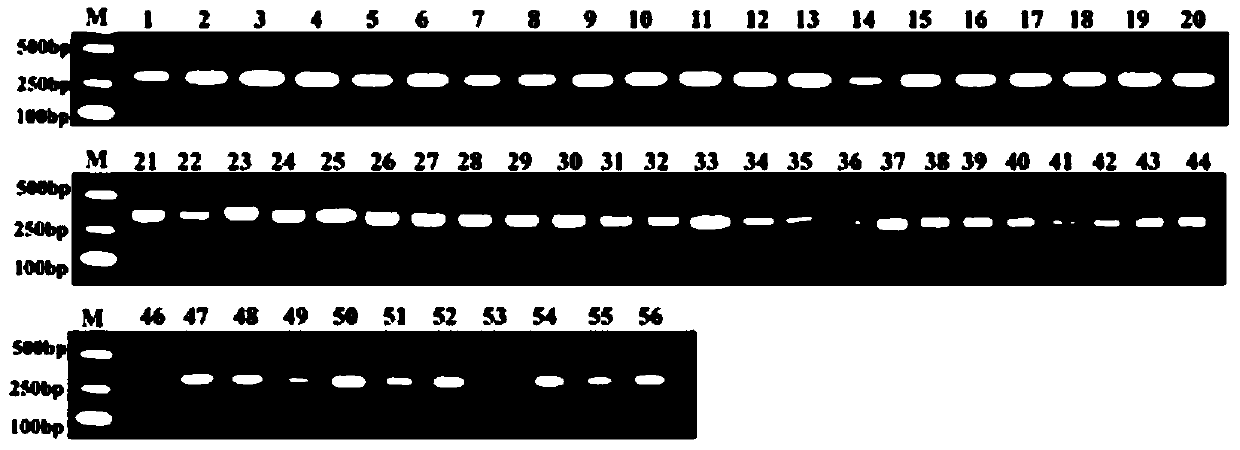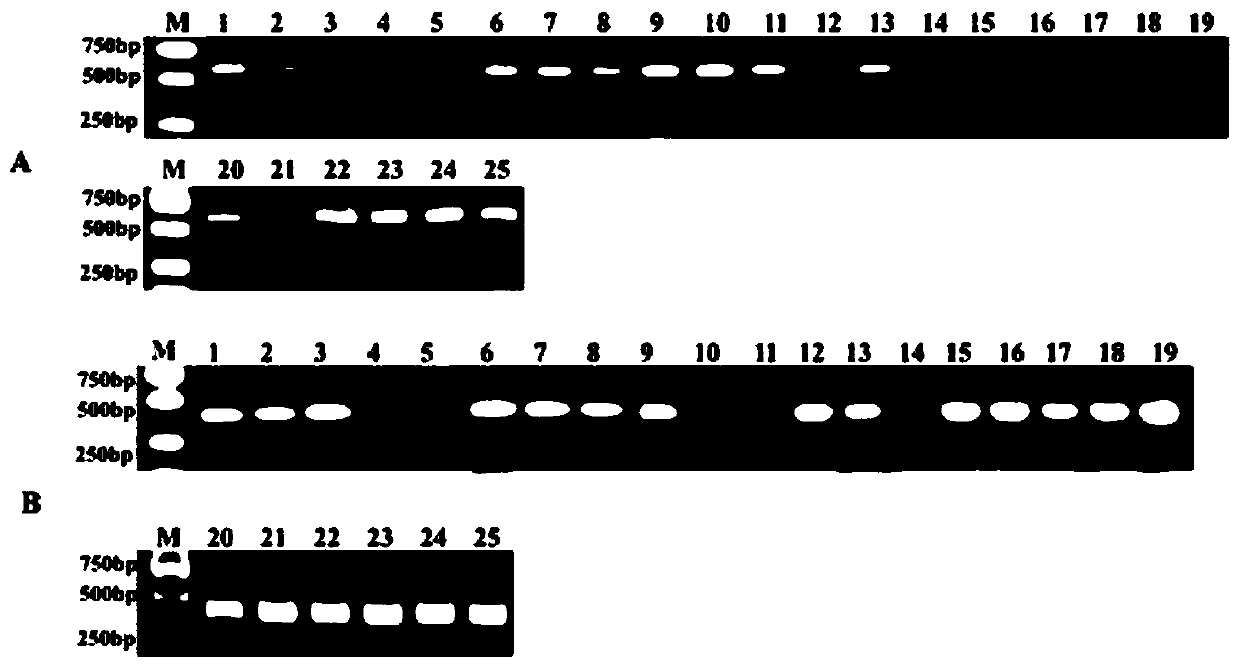A method for quickly distinguishing columnar apple seedlings using DNA molecular markers
A technology of DNA molecules and apples, applied in the field of molecular genetics and breeding, can solve problems such as difficult identification and differentiation
- Summary
- Abstract
- Description
- Claims
- Application Information
AI Technical Summary
Problems solved by technology
Method used
Image
Examples
Embodiment 1
[0060] In this example, 25 columnar apple types and 31 common apple types stored in the Jiaozhou Agricultural Science and Technology Demonstration Garden of Qingdao Agricultural University are used as test materials. The 25 columnar types include the hybrid F1 population of 'Fuji' apple and columnar apple 23 columnar hybrid individuals, 2 columnar apple varieties 'Lujia 4' and 'Weisekexu'; 31 common apple types including 29 hybrid F1 populations of 'Fuji' and columnar apples Common hybrid individuals, two common varieties 'Fuji' and 'Xu'.
[0061] The specific operation steps are as follows:
[0062] 1. Extraction of Apple Genomic DNA by CTAB Method
[0063] 1. Take a 2ml centrifuge tube, add 1.2ml CTAB and 50μL β-mercaptoethanol, and preheat it in a 65°C water bath, take about 0.5g of young apple leaves, add liquid nitrogen to quickly grind them into fine powder, and transfer to the above In a centrifuge tube containing CTAB, oscillate to mix, place in a water bath at 65°C ...
PUM
 Login to View More
Login to View More Abstract
Description
Claims
Application Information
 Login to View More
Login to View More - R&D
- Intellectual Property
- Life Sciences
- Materials
- Tech Scout
- Unparalleled Data Quality
- Higher Quality Content
- 60% Fewer Hallucinations
Browse by: Latest US Patents, China's latest patents, Technical Efficacy Thesaurus, Application Domain, Technology Topic, Popular Technical Reports.
© 2025 PatSnap. All rights reserved.Legal|Privacy policy|Modern Slavery Act Transparency Statement|Sitemap|About US| Contact US: help@patsnap.com



